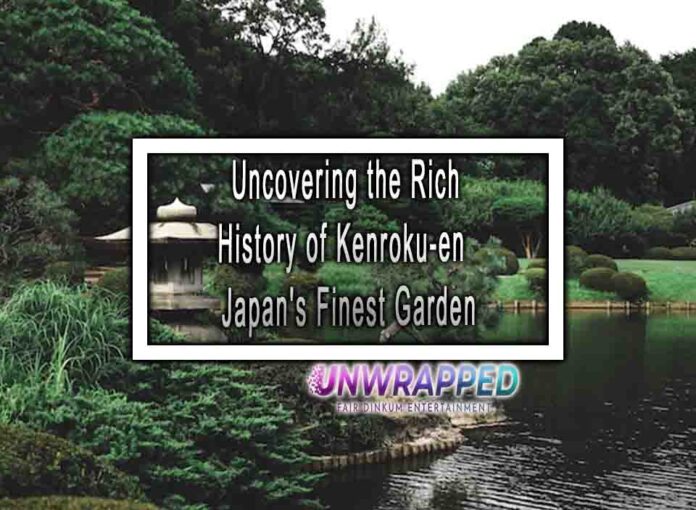Kenroku-en, located in Kanazawa, Ishikawa Prefecture, is considered one of Japan’s finest gardens. Uncovering its rich history reveals the depth of cultural and aesthetic significance associated with this beautiful landscape:
1. Origins:
- Kenroku-en‘s history dates back to the 17th century during the Edo period. It was originally the outer garden of Kanazawa Castle and was developed by the ruling Maeda family.

2. Inspiration from Chinese and Japanese Aesthetics:
- The garden’s design is influenced by both Chinese and Japanese landscaping principles. It incorporates elements such as hills, ponds, streams, and various plants arranged in a harmonious and balanced manner.
3. Six Principles of Garden Design:
- Kenroku-en is known for embodying the six principles of Chinese landscape design, which include spaciousness, seclusion, artifice, antiquity, water-courses, and panoramas. These principles contribute to the garden’s unique and captivating character.
4. Maeda Family’s Stewardship:
- The Maeda family, who were powerful feudal lords during the Edo period, took great care in developing and maintaining Kenroku-en over the centuries. The garden was expanded and refined over generations.
5. Opening to the Public:
- In 1874, during the Meiji era, Kenroku-en was opened to the public, making it one of the first public gardens in Japan. Its accessibility allowed people from all walks of life to appreciate its beauty.
6. Seasonal Beauty:
- Kenroku-en is designed to showcase the beauty of each season. Cherry blossoms in spring, lush greenery in summer, vibrant foliage in autumn, and the tranquility of snow-covered landscapes in winter all contribute to the garden’s ever-changing allure.
7. Unique Features:
- The garden features various unique elements, including the iconic Kotoji-toro stone lantern, the Yugao-tei teahouse, and the Kasumi-ga-ike pond with its two small islands, Kojima and Hisajima.
8. Seiso-no-utsushi (Sightseeing in Every Season):
- Kenroku-en adheres to the concept of “seiso-no-utsushi,” meaning that visitors can enjoy the garden’s beauty in every season. This principle underscores the careful selection of plants and the meticulous maintenance of the landscape.
9. Post-World War II Restoration:
- Kenroku-en suffered damage during World War II, but extensive restoration efforts were undertaken to bring the garden back to its original splendor. The restoration work was based on historical documents and records.
Kenroku-en stands as a testament to the enduring appeal of traditional Japanese garden design. Its meticulous layout, attention to detail, and seasonal transformations make it a captivating destination that continues to enchant visitors with its timeless beauty and historical significance.











